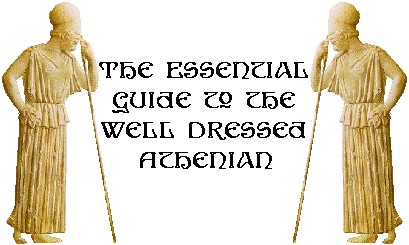

Bodice - A bodice is a close-fitting outer garment that forms the upper part of a woman's dress, or a portion of it. They are sometimes fitted with whalebone or other types of boning in the front to offer more support.
Brooch - A brooch is a piece of jewelry that comes in various styles and designs, with a tongue, pin, or loop for attaching it to a garment. They are usually worn at the breast by women and worn by men on their hats. Basically a fancy name for a pin, though these can be attached in more ways than a pin.
 Caparison - The caparison is the term for the
sum total of equestrian trappings and equippage (horse clothing). This
includes but is not limited to... the headstall (a halter-like arrangement
which fits across the forehead of the horse, around or across the ears, under
the throat, and up to the bit on either side of the horse's mouth), the saddle
cover (a cover for the saddle, these are usually made of course material
so they don't slide on the saddle), the petryal (a breast strap that fastens
to the saddle), and the crupper (the large array of straps that criss-cross
and hang from the horse's hindquarters).
Caparison - The caparison is the term for the
sum total of equestrian trappings and equippage (horse clothing). This
includes but is not limited to... the headstall (a halter-like arrangement
which fits across the forehead of the horse, around or across the ears, under
the throat, and up to the bit on either side of the horse's mouth), the saddle
cover (a cover for the saddle, these are usually made of course material
so they don't slide on the saddle), the petryal (a breast strap that fastens
to the saddle), and the crupper (the large array of straps that criss-cross
and hang from the horse's hindquarters).
Chlamys - The chlamys is a cape that is doubled or pinned over one shoulder which can be, and often is, worn alone.
Chiton - The chiton developed in about 479 BC is worn short by men and ankle length by women. It is made of linen or wool, has no embroidery and is belted or girdled in varying styles. If stitched together down the sides, it forms short sleeves.
Circlet - Circlets are thin bands of various materials worn in the hair, similar to a headband but usually set upon the ears, not tucked behind them. And unlike headbands, they are a full, unbroken circle. They can be made anything from metal to such natural things as leaves and flowers.
Halter Top - A halter top is a short top worn by women that fastens behind the back of the neck leaving the back and arms uncovered. They leave the midriff bare more often than not as well and can sometimes be laced up the front rather than fastened at the back.
Himation - The himation is a cloak, a larger and heavier version of the chlamys worn during winter.
Peplos - The peplos is basically two rectangles of wool cloth embroidered with small patterns or rows of figures which pins at the shoulders and falls straight or in folds to the ankles. It is most commonly belted above the waist.
Toga - Although similar to the chlamys and himation, the toga is considerably larger. It consists of a wool oval of cloth about three times the length of the wearer and is worn halved along its length in draped, complicated folds. The size and shape of the toga, as well as the color of the border, indicates social position. Originally of white wool and undecorated, the toga became more elaborate and gold embroidered designs were added. Women wore a simple version of the toga called a palla over their tunica.
Torc - A torc is a collar or neck chain, usually twisted, and worn especially by barbaric nations such as the Gauls. Torcs are solid circles of metal with an open end to allow them to be clasped around the neck. Decorations on these pieces of jewelry are usually centered around this openining, the ends of the semicircle being formed into some sort of animal's head or other pattern. This part of the torc is worn in the front, with the unbroken side of the circle around the back of the neck
Tunic - The tunic is an under-garment worn mostly by the Romans of both sexes. It is made with or without sleeves and reaches at least to the knees, sometimes even farther down than that. Due to the length of the garment, it is often confined at the waist by a girdle.
Turban - A turban is a headdress worn mostly by men that consists of a cap and a sash, scarf, or shawl. The sash or scarf is usually made of cotton or linen and is wound tightly about the cap, often times the end is left hanging down the neck for a little bit of flair.